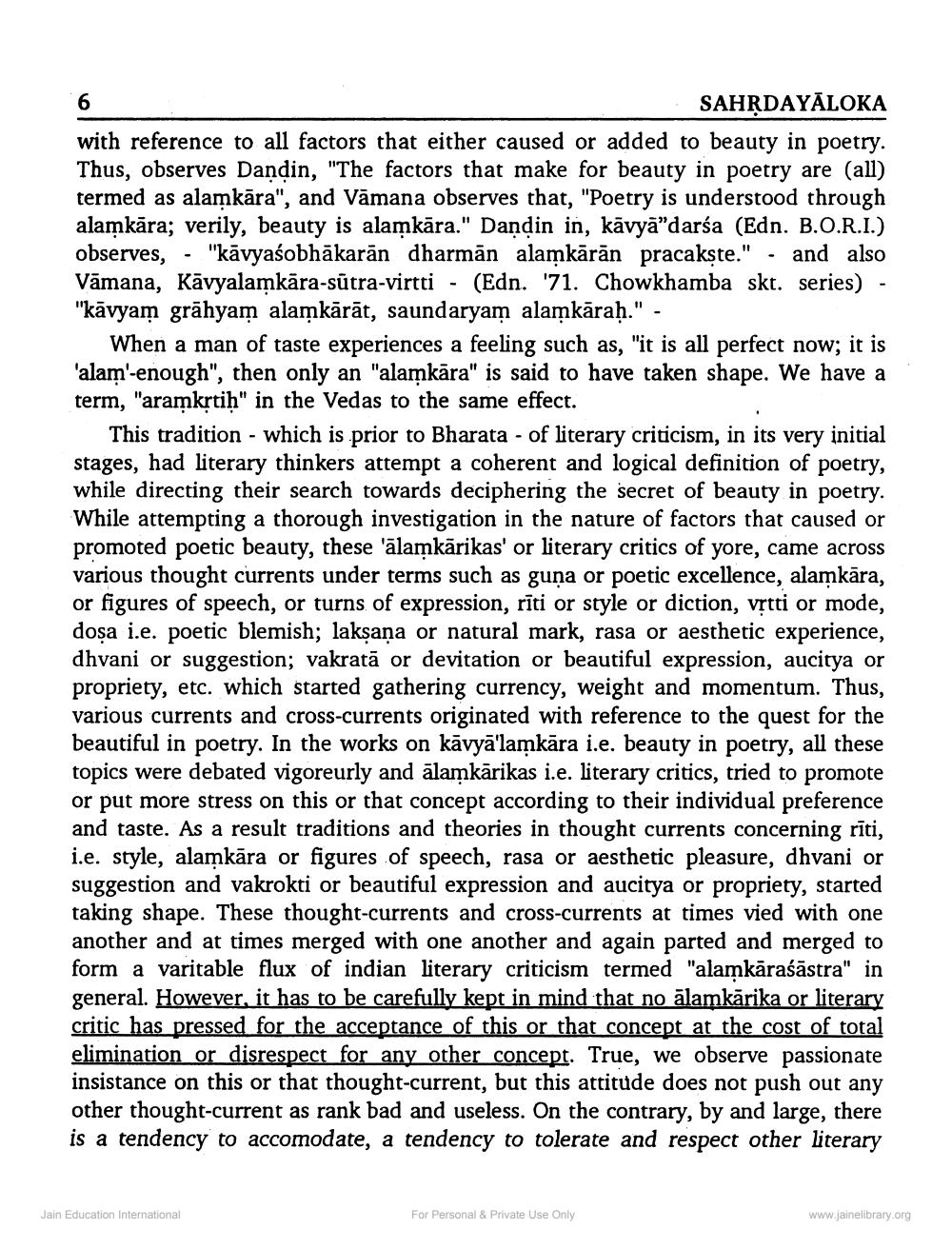________________
6
SAHRDAYĀLOKA with reference to all factors that either caused or added to beauty in poetry. Thus, observes Dandin, "The factors that make for beauty in poetry are (all) termed as alamkāra", and Vamana observes that, "Poetry is understood through alamkāra; verily, beauty is alamkāra." Dandin in, kāvyā”darśa (Edn. B.O.R.I.) observes, - "kāvyaśobhākarān dharmān alamkārān pracakste." . and also Vāmana, Kavyalamkāra-sūtra-virtti - (Edn. '71. Chowkhamba skt. series) - "kāvyam grāhyam alamkārāt, saundaryam alamkāraḥ." -
When a man of taste experiences a feeling such as, "it is all perfect now; it is alam'-enough", then only an "alamkāra" is said to have taken shape. We have a term, "aramkştih" in the Vedas to the same effect.
This tradition - which is prior to Bharata - of literary criticism, in its very initial stages, had literary thinkers attempt a coherent and logical definition of poetry, while directing their search towards deciphering the secret of beauty in poetry. While attempting a thorough investigation in the nature of factors that caused or promoted poetic beauty, these 'ālamkārikas' or literary critics of yore, came across various thought currents under terms such as guna or poetic excellence, alamkāra, or figures of speech, or turns of expression, rīti or style or diction, vịtti or mode, dosa i.e. poetic blemish; laksana or natural mark, rasa or aesthetic experience, dhvani or suggestion; vakratā or devitation or beautiful expression, aucitya or propriety, etc. which started gathering currency, weight and momentum. Thus, various currents and cross-currents originated with reference to the quest for the beautiful in poetry. In the works on kavya'lamkāra i.e. beauty in poe topics were debated vigoreurly and alamkarikas i.e. literary critics, tried to promote or put more stress on this or that concept according to their individual preference and taste. As a result traditions and theories in thought currents concerning rīti, i.e. style, alamkāra or figures of speech, rasa or aesthetic pleasure, dhvani or suggestion and vakrokti or beautiful expression and aucitya or propriety, started taking shape. These thought-currents and cross-currents at times vied with one another and at times merged with one another and again parted and merged to form a varitable flux of indian literary criticism termed "alamkāraśāstra" in general. However, it has to be carefully kept in mind that no ālamkārika or literary critic has pressed for the acceptance of this or that concept at the cost of total elimination or disrespect for any other concept. True, we observe passionate insistance on this or that thought-current, but this attitude does not push out any other thought-current as rank bad and useless. On the contrary, by and large, there is a tendency to accomodate, a tendency to tolerate and respect other literary
Jain Education International
For Personal & Private Use Only
www.jainelibrary.org




